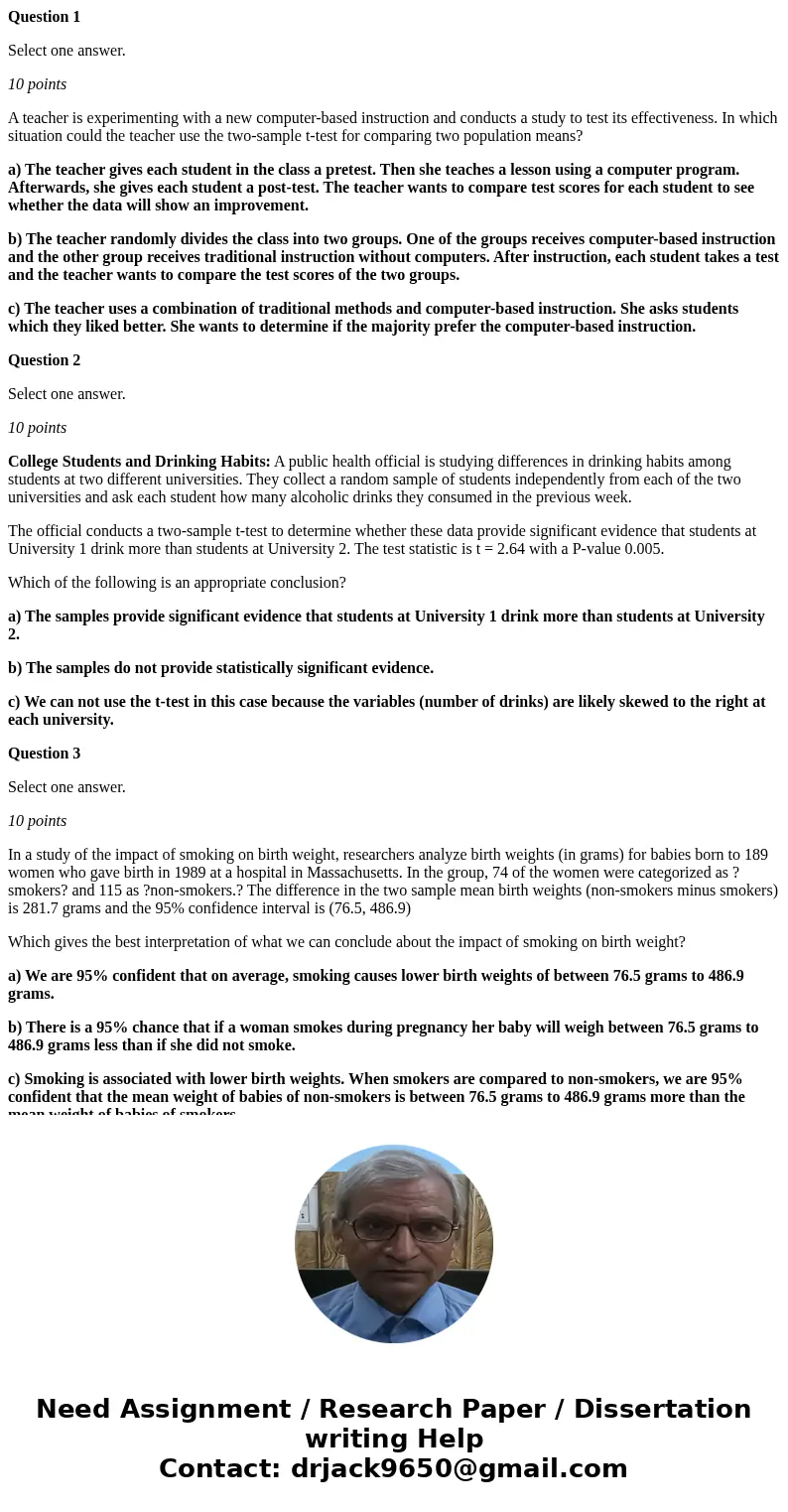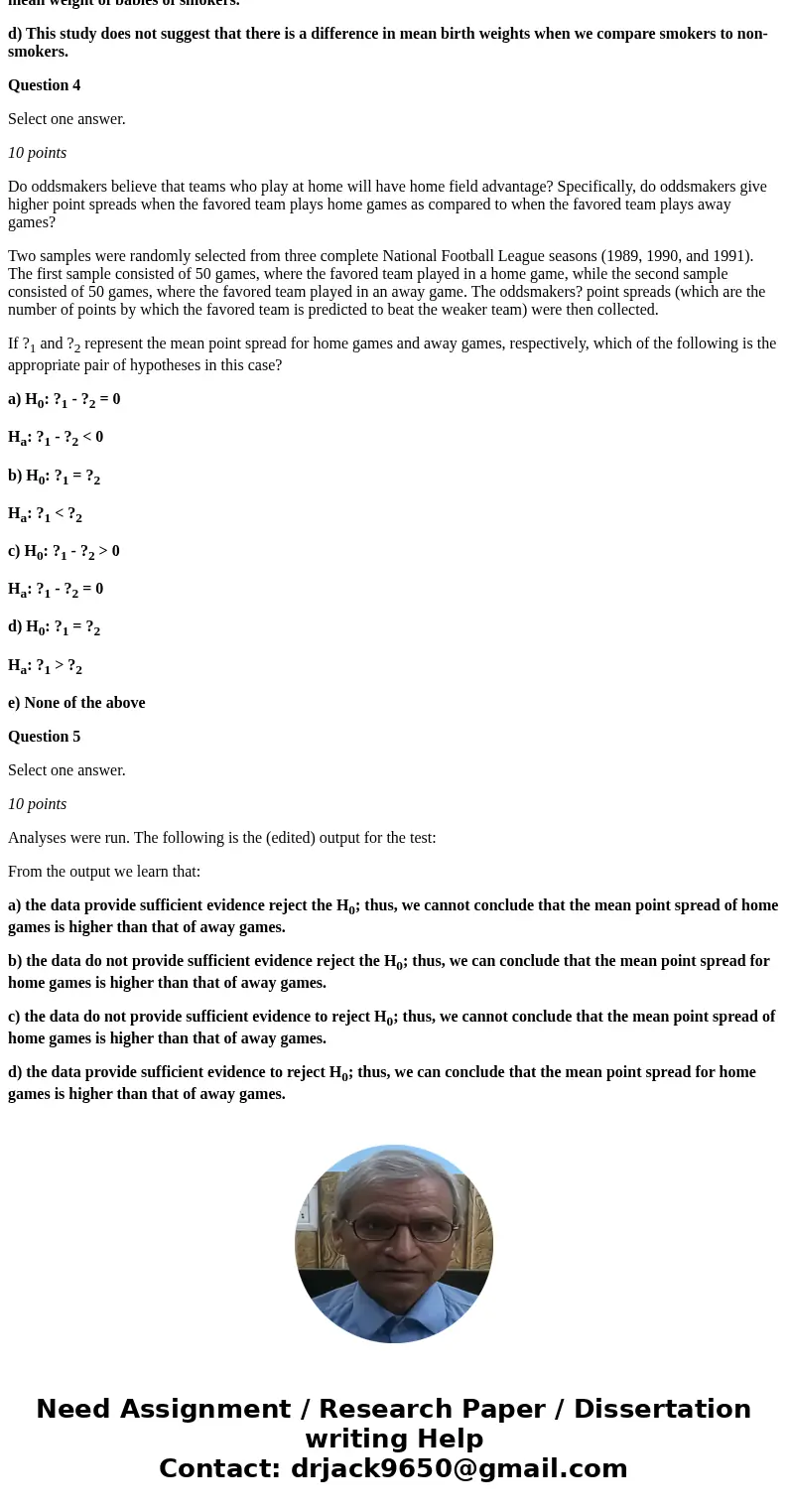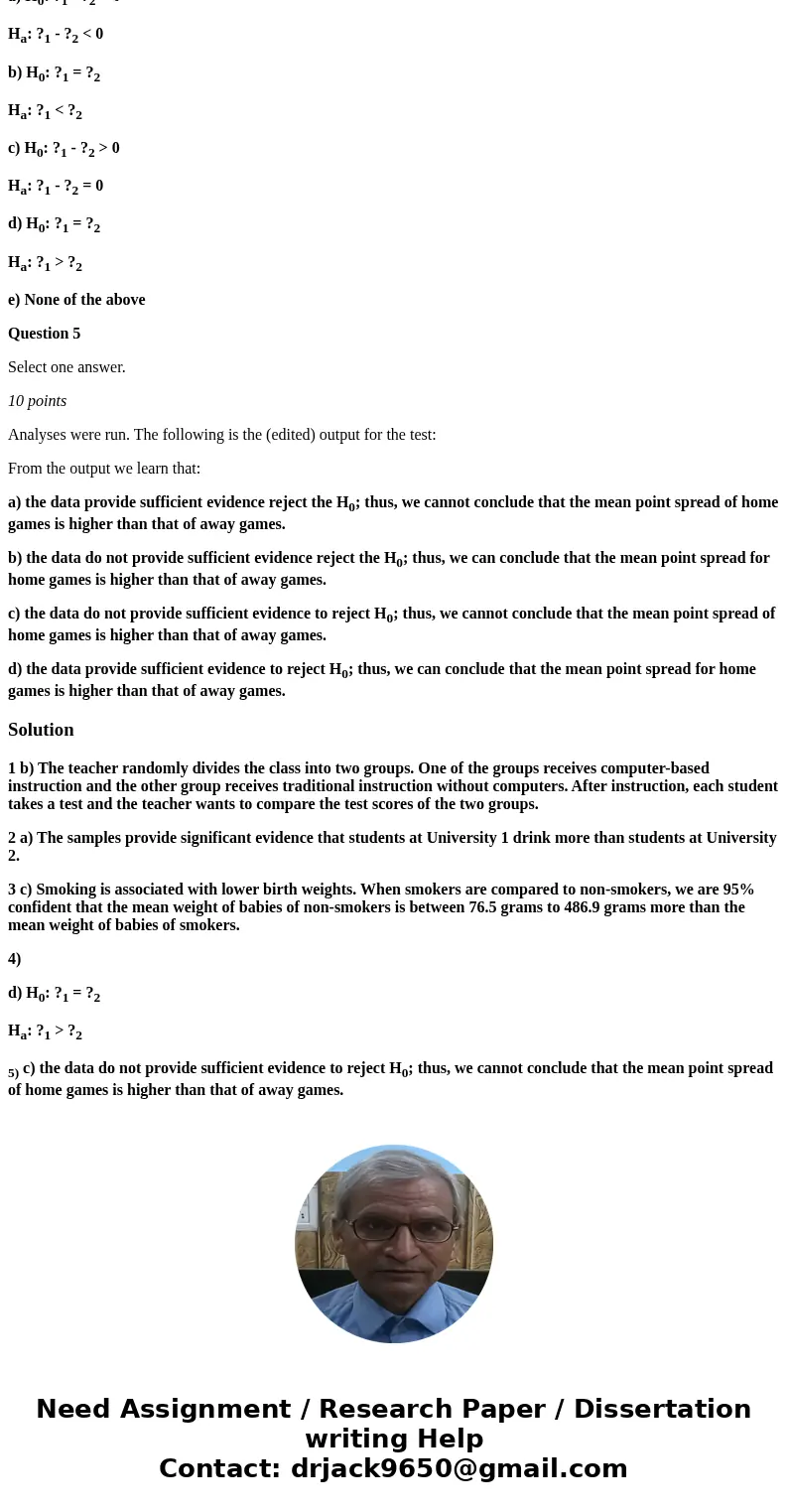Question 1 Select one answer 10 points A teacher is experime
Question 1
Select one answer.
10 points
A teacher is experimenting with a new computer-based instruction and conducts a study to test its effectiveness. In which situation could the teacher use the two-sample t-test for comparing two population means?
a) The teacher gives each student in the class a pretest. Then she teaches a lesson using a computer program. Afterwards, she gives each student a post-test. The teacher wants to compare test scores for each student to see whether the data will show an improvement.
b) The teacher randomly divides the class into two groups. One of the groups receives computer-based instruction and the other group receives traditional instruction without computers. After instruction, each student takes a test and the teacher wants to compare the test scores of the two groups.
c) The teacher uses a combination of traditional methods and computer-based instruction. She asks students which they liked better. She wants to determine if the majority prefer the computer-based instruction.
Question 2
Select one answer.
10 points
College Students and Drinking Habits: A public health official is studying differences in drinking habits among students at two different universities. They collect a random sample of students independently from each of the two universities and ask each student how many alcoholic drinks they consumed in the previous week.
The official conducts a two-sample t-test to determine whether these data provide significant evidence that students at University 1 drink more than students at University 2. The test statistic is t = 2.64 with a P-value 0.005.
Which of the following is an appropriate conclusion?
a) The samples provide significant evidence that students at University 1 drink more than students at University 2.
b) The samples do not provide statistically significant evidence.
c) We can not use the t-test in this case because the variables (number of drinks) are likely skewed to the right at each university.
Question 3
Select one answer.
10 points
In a study of the impact of smoking on birth weight, researchers analyze birth weights (in grams) for babies born to 189 women who gave birth in 1989 at a hospital in Massachusetts. In the group, 74 of the women were categorized as ?smokers? and 115 as ?non-smokers.? The difference in the two sample mean birth weights (non-smokers minus smokers) is 281.7 grams and the 95% confidence interval is (76.5, 486.9)
Which gives the best interpretation of what we can conclude about the impact of smoking on birth weight?
a) We are 95% confident that on average, smoking causes lower birth weights of between 76.5 grams to 486.9 grams.
b) There is a 95% chance that if a woman smokes during pregnancy her baby will weigh between 76.5 grams to 486.9 grams less than if she did not smoke.
c) Smoking is associated with lower birth weights. When smokers are compared to non-smokers, we are 95% confident that the mean weight of babies of non-smokers is between 76.5 grams to 486.9 grams more than the mean weight of babies of smokers.
d) This study does not suggest that there is a difference in mean birth weights when we compare smokers to non-smokers.
Question 4
Select one answer.
10 points
Do oddsmakers believe that teams who play at home will have home field advantage? Specifically, do oddsmakers give higher point spreads when the favored team plays home games as compared to when the favored team plays away games?
Two samples were randomly selected from three complete National Football League seasons (1989, 1990, and 1991). The first sample consisted of 50 games, where the favored team played in a home game, while the second sample consisted of 50 games, where the favored team played in an away game. The oddsmakers? point spreads (which are the number of points by which the favored team is predicted to beat the weaker team) were then collected.
If ?1 and ?2 represent the mean point spread for home games and away games, respectively, which of the following is the appropriate pair of hypotheses in this case?
a) H0: ?1 - ?2 = 0
Ha: ?1 - ?2 < 0
b) H0: ?1 = ?2
Ha: ?1 < ?2
c) H0: ?1 - ?2 > 0
Ha: ?1 - ?2 = 0
d) H0: ?1 = ?2
Ha: ?1 > ?2
e) None of the above
Question 5
Select one answer.
10 points
Analyses were run. The following is the (edited) output for the test:
From the output we learn that:
a) the data provide sufficient evidence reject the H0; thus, we cannot conclude that the mean point spread of home games is higher than that of away games.
b) the data do not provide sufficient evidence reject the H0; thus, we can conclude that the mean point spread for home games is higher than that of away games.
c) the data do not provide sufficient evidence to reject H0; thus, we cannot conclude that the mean point spread of home games is higher than that of away games.
d) the data provide sufficient evidence to reject H0; thus, we can conclude that the mean point spread for home games is higher than that of away games.
Solution
1 b) The teacher randomly divides the class into two groups. One of the groups receives computer-based instruction and the other group receives traditional instruction without computers. After instruction, each student takes a test and the teacher wants to compare the test scores of the two groups.
2 a) The samples provide significant evidence that students at University 1 drink more than students at University 2.
3 c) Smoking is associated with lower birth weights. When smokers are compared to non-smokers, we are 95% confident that the mean weight of babies of non-smokers is between 76.5 grams to 486.9 grams more than the mean weight of babies of smokers.
4)
d) H0: ?1 = ?2
Ha: ?1 > ?2
5) c) the data do not provide sufficient evidence to reject H0; thus, we cannot conclude that the mean point spread of home games is higher than that of away games.



 Homework Sourse
Homework Sourse